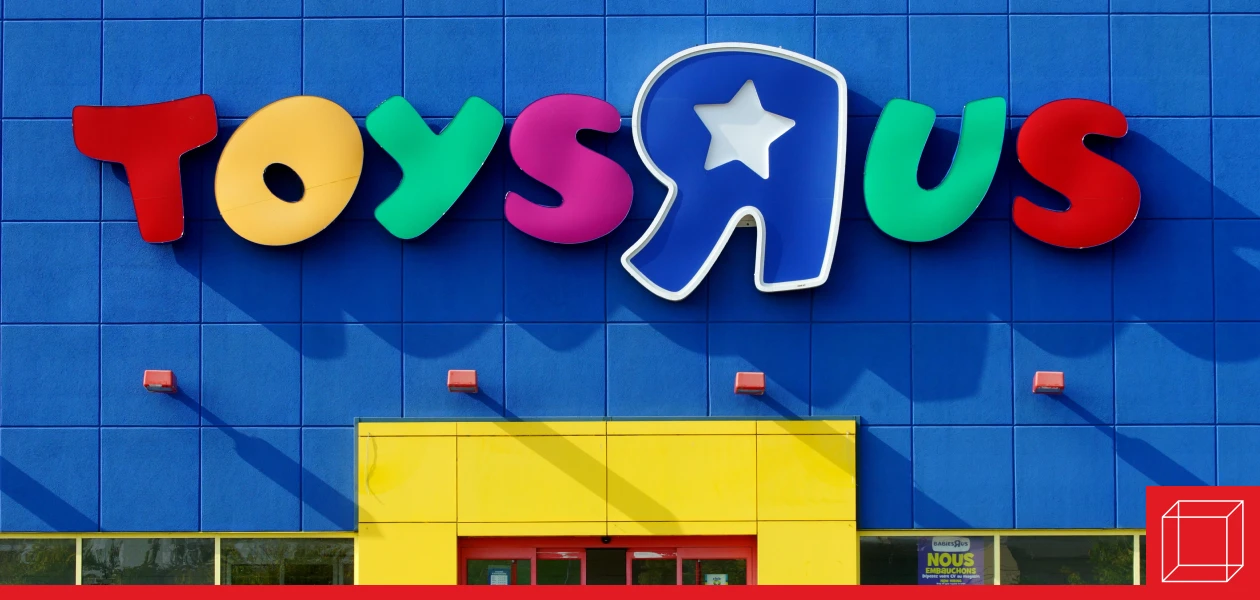Toys 'R' Us Toys with Artificial Intelligence
Toys 'R' Us has taken a bold step into the future of advertising by utilizing generative artificial intelligence (AI) to create a new video advertisement. This innovative approach has sparked a mix of reactions from industry professionals and the public alike. The ad, which pays homage to the company's late founder, Charles Lazarus, showcases the potential and challenges of AI in advertising.

The Origin of Toys"R"Us: Brand Film
The Concept and Creation of the AI-Generated Ad
The ad, titled "The Origin of Toys 'R' Us," is a minute-long video that portrays Charles Lazarus as a child dreaming of a toy store with Geoffrey the Giraffe, the brand's iconic mascot. This creative narrative was brought to life using Sora, an AI tool developed by OpenAI that converts text to video. OpenAI is also the company behind the generative AI chatbot ChatGPT. Although Sora is not yet available to the public, Toys ‘R’ Us leveraged this cutting-edge technology to produce a unique and imaginative advertisement.
The creation of the ad was a collaborative effort between Toys ‘R’ Us and the creative agency Native Foreign. According to Kim Miller Olko, chief marketing officer at Toys ‘R’ Us, the project provided an opportunity to experiment with advanced technology. The process involved approximately 20 professionals, including designers, art directors, and animators, who worked alongside the AI to generate each frame of the video.
One of the significant challenges in producing the ad was ensuring that the AI accurately interpreted the creative team's intentions. This required hundreds of revisions to the text prompts given to Sora. Chief creative officer Nik Kleverov noted that getting the character motivations, facial expressions, and movements correct was particularly challenging. Despite these hurdles, the AI tool completed about 80% to 85% of the work, with the team making final adjustments similar to postproduction tweaks in traditional ad shoots.
Mixed Responses
The AI-generated ad has elicited a wide range of reactions. Some creative professionals have praised it as a brilliant and exciting use of technology, while others have criticized it as a mediocre effort that undermines the quality of traditional advertising. Critics have pointed out imperfections, such as inconsistencies in the appearance of the virtual child star, but others argue that these flaws are secondary to the innovation and bravery shown by Toys ‘R’ Us.
Mark D’Arcy, former chief creative officer at Meta Platforms, highlighted the groundbreaking nature of the ad's creation process. He suggested that AI will soon enable even small businesses to produce high-quality advertisements, reducing the need for extensive budgets and manpower. This democratization of advertising production could significantly impact the industry, allowing for more creativity and experimentation.
The use of AI in advertising also raises questions about its potential effects on employment and agency billing models. The efficiency and speed of AI tools like Sora could reduce the need for large teams and long production times, challenging traditional agency billing practices based on hours worked and personnel involved. However, the exact economic impact remains to be seen, as agencies and clients navigate this evolving landscape.
Strategic Innovation
As AI technology continues to advance, its role in creative industries is expected to grow. Within the next six to 12 months, more brands are likely to release ads produced primarily by AI. This shift could lead to a new era of advertising, where AI-generated content becomes commonplace and even rivals traditional ads in quality and creativity.
For Toys ‘R’ Us, the AI-generated ad serves a strategic purpose beyond showcasing technological prowess. It aims to reintroduce Charles Lazarus and Geoffrey the Giraffe to consumers, reminding them of the brand's presence. Toys ‘R’ Us filed for bankruptcy in 2017, closing all of its stores by 2021. After being acquired by WHP Global, the company began to work with Macy’s online. Today, Macy’s has introduced Toys “R” Us locations within many of its department stores. Toys ‘R’ Us plans to run the ad on various streaming platforms and potentially broadcast TV ahead of the holiday season.
Toys ‘R’ Us's use of AI in advertising marks a significant milestone in the industry's evolution. While the mixed reactions underscore the challenges and uncertainties of this approach, the ad demonstrates the potential for AI to transform how brands connect with audiences. As more companies explore AI-driven advertising, the lessons learned from Toys ‘R’ Us's experiment will undoubtedly shape the future of marketing and creative production.
In the Classroom
This article can be used to discuss promotion strategy (Chapter 12: Dimensions of Marketing Strategy).
Discussion Questions
1. Describe the responses to Toy ‘R’ Us’s AI ad.
2. In what ways could AI-generated advertising impact the traditional advertising industry?
3. What strategic purposes does the AI-generated ad serve for Toys ‘R’ Us?
This article was developed with the support of Kelsey Reddick for and under the direction of O.C. Ferrell, Linda Ferrell, and Geoff Hirt.
Britney Nguyen, “Toys 'R' Us Released an AI-Generated Ad. It's Getting Mixed Reviews,” Quartz, June 28, 2024, https://qz.com/toys-r-us-ai-generated-ad-openai-sora-mixed-reactions-1851566079
Dina Kaur, "Is Toys 'R' Us Coming Back to Arizona? Why the Revival Isn't Exactly a Comeback," AZ Central, October 2, 2023, https://www.azcentral.com/story/entertainment/life/2023/10/02/toys-r-us-expansion-2024/71037352007/
Patrick Coffee, "All-AI Ad From Toys ‘R’ Us Inspires Debate Over the Future of Marketing," The Wall Street Journal, June 28, 2024, https://www.wsj.com/articles/all-ai-ad-from-toys-r-us-inspires-debate-over-the-future-of-marketing-fbecc05b
Samantha Murphy, "Toys ‘R’ Us Made an Ad Almost Entirely AI," CNN, June 25, 2024, https://www.cnn.com/2024/06/25/tech/toys-r-us-sora-ai/index.html



